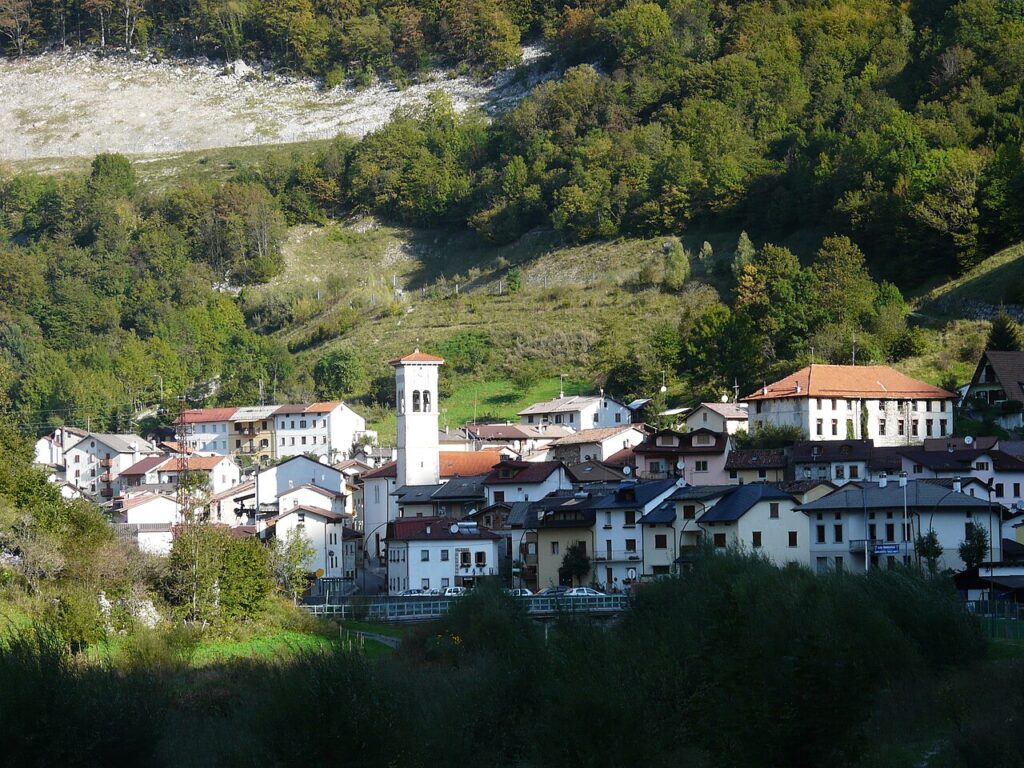Since then, the linguistic repertoire of the speakers has expanded over time to include the languages Italian and Friulian, which, as respectively the state language and the regionally recognized official language, have pushed back the use of the Tischlbongerisch language. Today, only the older and adult generations have language skills in all three languages, while the younger generation has little to no proficiency in the local South Bavarian variety.
Like the other German-based language islands in the autonomous region of Friuli Venezia Giulia, the historical language minority in Timau is also protected by State Law 482 from 1999.For many years, various projects promoting the minority language have worked to preserve the cultural heritage associated with the language, which has also played an important identity-forming role over the centuries. Cultural initiatives (various folklore groups and cultural associations, the “Teresina Unfer” choir as well as school projects and publications) are intended to help preserve Tischlbongerisch, possibly as a language of the private sphere (spoken at home, with family), but at the very least as a language of identification and symbolism.
Further reading
- Baum, Wilhelm (1983): Deutsche Sprachinseln in Friaul. Klagenfurt: Carinthia Verlag.
- Cattarin, Francesca (2009): Tischlbongarisch learnan. Udine: Consorzio Universitario del Friuli.
- Comitato unitario delle isole linguistiche storiche germaniche in Italia (a cura di) (2022): Le isole linguistiche germaniche fioriscono: Comitato Unitario 2001-2021. Bolzano: Athesia.
- De Franceschi, Cristina (1990): L’elemento friulano nel dialetto tedesco di Timau. Master thesis, University of Udine.
- Francescato, Giuseppe & Paola Solari Francescato (2012): Timau. Tre lingue per un paese. Re-issued and edited by Vincenzo Orioles. Galatina: Congedo Editore.
- Geyer, Ingeborg (2018): Wortschatzentwicklung in den Sprachinseln Sappada/Pladen, Sauris/Zahre und Timau/Tischelwang im historischen Friaul. Germanistische Linguistik 239-240, 325–343.
- Geyer, Ingeborg (1984): Die deutsche Mundart von Tischelwang in Karnien. Vienna: VWGÖ.
- Geyer, Ingeborg, Marco Angster & Marcella Benedetti (eds.) (2014): Il tesoro linguistico delle isole germaniche in Italia / Wortschatz aus den deutschen Sprachinseln in Italien. Luserna: Comitato unitario delle isole linguistiche storiche germaniche in Italia.
- Geyer, Ingeborg & Anna Gasser (2002): Vocabolario Timavese – Bartarpuach va Tischlbong – Wörterbuch der deutschen Mundart von Tischelwang/Timau. Vienna: Praesens.
- Heller, Karin, Luis Thomas Prader & Christian Prezzi (eds.) (2006): Lebendige Sprachinseln. 2nd edition. Bozen: Athesia.
- Wurzer, Bernhard (1973): Die deutschen Sprachinseln in Oberitalien. Bozen: Athesia.
Further online ressources

